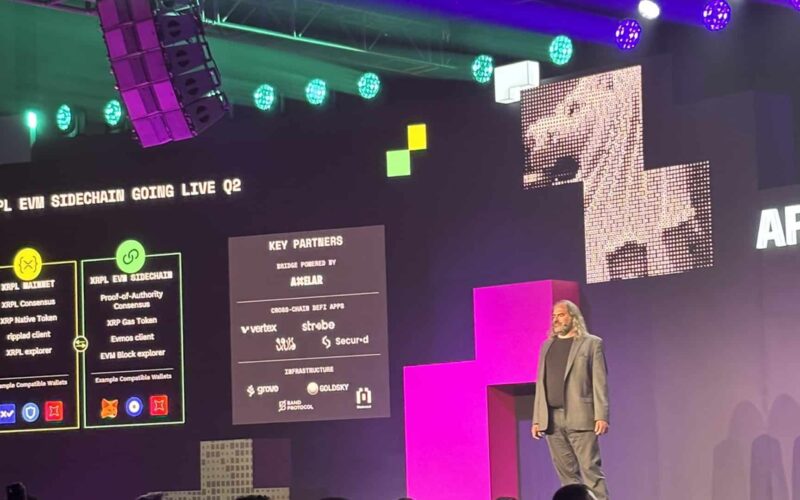Ripple is gearing up to launch a sidechain compatible with Ethereum (EVM) connected to the XRP Ledger in the second quarter of 2025, enabling the execution of Ethereum smart contracts.
This sidechain, supported by Peersyst and Ripple, will utilize evmOS and the Axelar bridge to ensure interoperability, with the XRP (wrapped) as the native gas token.
This official project provides a direct response to Flare and finally opens up XRPL to Ethereum applications.
Ripple brings out the big guns to attract Ethereum developers
It’s one of the strategic announcements of the year for the XRP ecosystem. Ripple and its partners are set to launch, starting in the second quarter of 2025, an Ethereum-compatible sidechain (EVM) connected to the XRP Ledger. The goal is to enable the execution of smart contracts from Ethereum while benefiting from the performance and low costs of the XRPL network.
David Schwartz, Ripple’s CTO, officially unveiled this roadmap at the 2025 Apex event in Singapore. And this isn’t just a vague promise: the sidechain is already active on the testnet. If testing continues successfully and partnerships with validators materialize, the mainnet launch will take place in the coming weeks.
Why this is a major turning point for Ripple
Until now, the XRP Ledger did have its own native smart contract functions. But it lacked a key ingredient to attract Ethereum developers: compatibility with the EVM (Ethereum Virtual Machine). The majority of decentralized applications on the market, from DeFi to NFTs, are built using this environment.
With this new sidechain, Ripple aims to fill this gap. It will run in parallel with the XRPL main chain while being connected to it through a bridge built with Axelar. The XRP token (in its ‘wrapped’ version) will serve as the native gas token to pay fees on the sidechain.
Peersyst, Axelar, and evmOS: the technological combination behind this venture
The project is led by Peersyst, one of the main developers in the XRPL ecosystem, with direct support from Ripple. It is based on the evmOS software stack, already used in other interoperable initiatives. And most importantly, it relies on Axelar as the sole asset transfer bridge, a strategic choice to secure transactions between the sidechain and the XRPL mainnet.
A response to Flare, a gateway to Ethereum apps
With this advancement, Ripple also seems to indirectly respond to Flare Network, another project connected to XRPL that already offers EVM compatibility through its own layer. The difference here is that this is not a third-party solution but an official, integrated extension designed to enhance the core of the XRP Ledger.
In practice, this compatibility will open the door to a whole new universe of Ethereum applications on XRPL, whether it’s DeFi platforms, blockchain games, or tokenized solutions. A long-awaited opening by the community that could breathe new life into the adoption of XRP in the months to come.
Sidechain EVM, XRP Ledger, Ripple, Ethereum, smart contracts: the keywords are in place. And so are the stakes.




